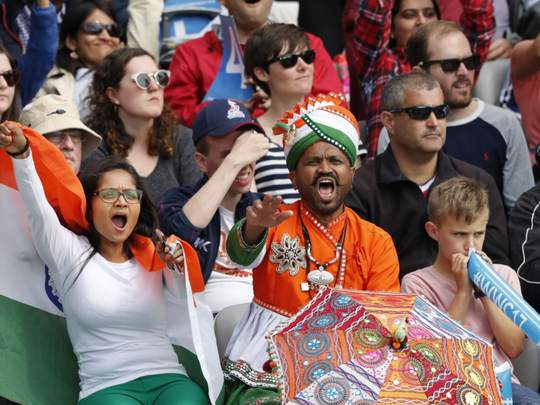
Great sport knows no gender. Great drama knows no gender. And as England became world champions for the fourth time, on their own turf and in front of their own public, the thought struck that to declare this a triumph for women’s sport would be somehow to diminish the achievement, not embellish it.
ALSO READ:
Long queues to watch women’s cricket is a great sign
‘World Cup show will boost women cricket in India’
Shrubsole stars as England edge India in Women’s World Cup final
The first time the Women’s World Cup was held in this country was in 1973, when it was played largely at unloved club grounds: Ealing, Dartford, Kirby Muxloe. The players bought their own kit and paid for their own travel, put up the promotional posters themselves and, in the case of Rachel Heyhoe-Flint, even wrote up the newspaper reports afterwards. England beat Australia in the final. The celebrations were muted; most of the players were back at work on Monday.
The second and last time was in 1993. The players were still wearing skirts. Women were still banned from the Lord’s pavilion. The tournament almost fell through because of a lack of finance. In the final, Karen Smithies’ England scored 195 off 60 overs, and won at a canter in front of a largely empty Lord’s. The whole thing was forgotten about within hours.
And so as England toasted their victory, thoughts turned to those who had gone before. Claire Connor and Charlotte Edwards. Smithies and Jan Brittin. Heyhoe-Flint and Enid Bakewell. Eileen Ash, England’s oldest living Test cricketer, who was at Lord’s to ring the five-minute bell, 105 years of age, but scarcely looking a day over 90. These are the women who blazed the trail.
Now England were lifting the World Cup trophy in front of a capacity Lord’s crowd, in a match being televised around the world, in a tournament with prize money of £1.5 million (Dh7.15 million). Women’s cricket has been on an epic journey, and perhaps the most exciting part is that nobody knows quite how far it still has to travel. The strides made in recent years have been apparent during this month-long tournament. We have seen great innings from the likes of Chamari Atapattu and Harmanpreet Kaur, great bowling spells from Dane van Niekerk and Anya Shrubsole, fielding on a level not seen before in the women’s game.
Stars have been born; stars have faded. Most importantly, the standard of the global game is higher than it has ever been, culminating in a final that served not just as an ideal advertisement for the women’s game, but for the power of international sport. This last point is perhaps the key. Partisanship is the passcode that unlocks the highest levels of sporting appeal. You can attract anybody to a one-off event with a decent marketing campaign and some upmarket food stalls. But to keep them coming back again and again, you need more: characters, narratives, players you can root for and a cause you can rally around. You need songs and chants, the scent of triumph, the stench of disaster. And, at Lord’s yesterday, there was a definite sense that many of the crowd were not simply here for the craic or the beef brisket burritos, but because they wanted to see one team definitely win and one team definitely lose.
Until the very final ball was bowled, it was by no means clear which team would be which. England’s total of 228 felt as if it could have been either slightly under par or slightly above it. Certainly they would have been eyeing a score in excess of 250 when Sarah Taylor and Nat Sciver were knocking the ball around with impunity in the middle overs. But the wickets of both in the space of 20 minutes, along with that of Fran Wilson for a duck, threatened to cut the England innings off at the knees. Only the spirited late hitting of Katherine Brunt, Jenny Gunn and Laura Marsh lifted England beyond 200 and to a defendable total.
But the knowledge that no team had ever chased more than 166 to win a World Cup final proved scant comfort as Kaur and Punam Raut whittled the target down to under 40. Only the iron will of Shrubsole, and the safe hands of her teammates hauled England back into contention. Who knows what was going through the England players’ minds at the moment of victory?
Toil and hard work know no gender. Joy and despair know no gender. As Shrubsole claimed the final wicket, last batsman Rajeshwari Gayakwad slumped to the turf in dismay.
Just beyond the boundary, India’s batsmen blinked back tears, mourning the victory that had seemed just within their grasp. They are a young side, and their time will come again. But on a chilly afternoon at the home of cricket, with the streamers flying and the MCC members cheering from the rafters, England’s time had never felt more like now.
— The Telegraph Group Limited, London, 2017
Jonathan Liew is a columnist and feature writer for the Daily Telegraph, covering football and a number of other sports.












